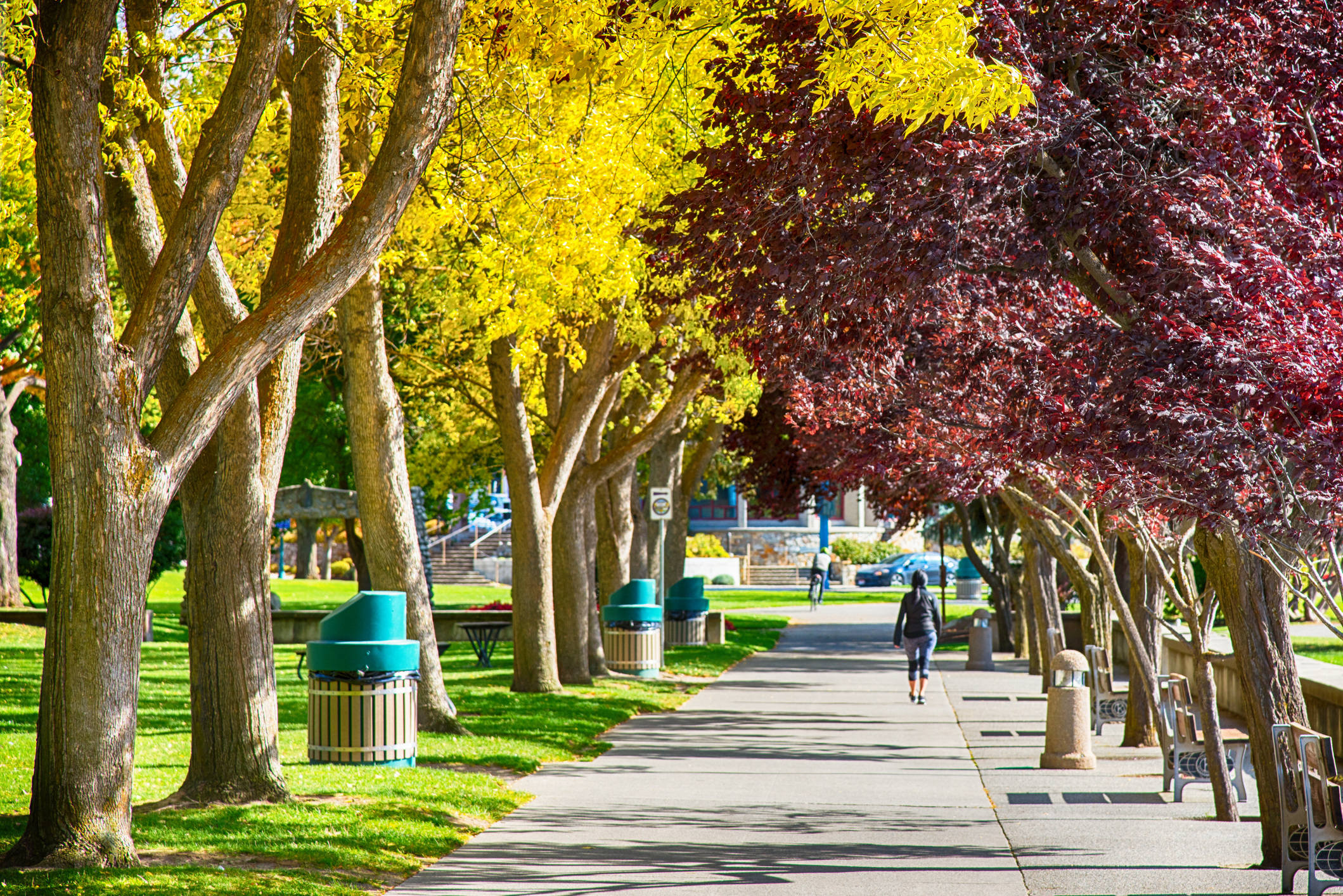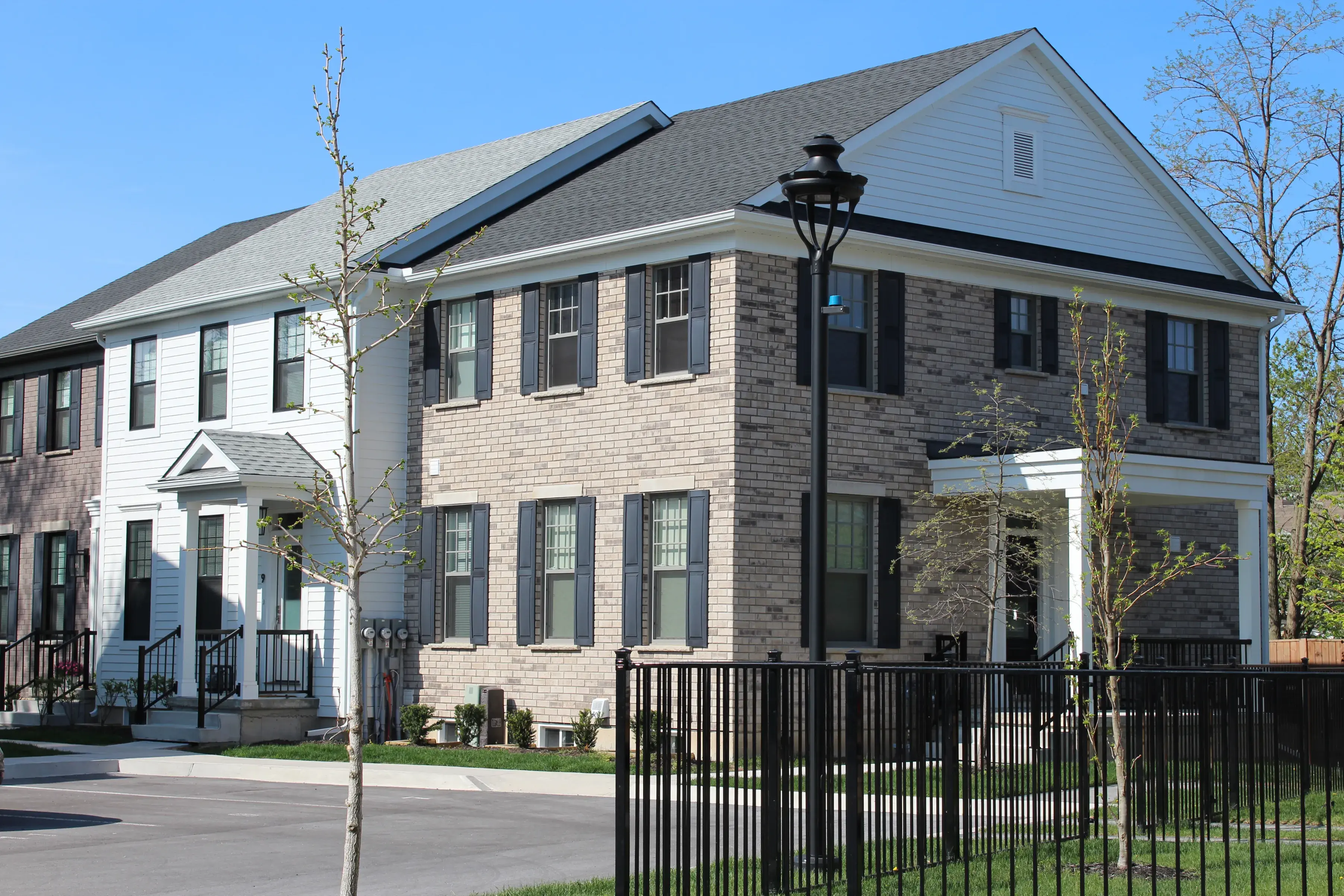What Makes a Community Walkable?

In recent years, public opinion on walkability has evolved significantly. People are growing tired of the constant need to hop in the car for every errand, leading to a surge in demand for neighbourhoods where walking isn’t just a possibility, but the preferred way to get around. As cities and developers respond to this shift, building walkable neighbourhoods has become a priority. But what exactly makes a walkable community, and why should it matter to you? Keep reading to find out.
Understanding Walkability
Walkability is more than just a buzzword – it’s a concept that focuses on how easily people can get around their neighbourhoods on foot. These communities are thoughtfully designed to encourage walking and biking instead of depending on motorized vehicles. This approach aims to create spaces that promote health, sustainability and connection. In a walkable community, features like safe sidewalks, bike lanes and easy access to services make walking both practical and enjoyable. But it’s not just about adding these elements here are there; it’s about weaving them into the overall design of the neighbourhood. The goal is to make walking and biking not only possible but preferred, helping to improve the quality of life for residents and create a more sustainable urban environment.
The Walkability Hierarchy of Needs
The Walkability Hierarchy of Needs Pyramid helps guide the development and measurement of walkable spaces. This pyramid outlines key requirements for creating walkable environments, ranking them by importance. At the base, the first priority is “passable,” meaning the urban area must physically allow people to walk from one place to another. Next is “accessible,” ensuring there are destinations within reasonable walking distance. The third priority is “safe,” which means protecting pedestrians from traffic and crime, both along and across streets. Level four is “convenient,” which emphasizes that the environment should prioritize walking by reducing the time it takes to reach destinations, especially compared to other transportation options. Fifth is “comfortable,” focusing on minimizing discomfort caused by factors like weather, crowding or fatigue, by incorporating design elements that address these issues. Finally, at the top of the pyramid is “enjoyable.” A walkable urban environment should offer an element of joy, achieved through art, entertainment and other amenities that make walking not just practical but pleasant.
5 Key Features of Walkable Communities
-
Proximity to Amenities
According to the Congress for the New Urbanism, the ideal walkable neighbourhood includes a mix of homes, shops and recreational spaces, all within walking distance of each other. Imagine living in a neighbourhood where you can easily walk to the grocery store, coffee shop or park. In a well-designed walkable community, everyday needs are close by, which reduces the need to drive and helps foster a sense of connection. In these neighbourhoods, residential areas are combined with commercial and recreational spaces. This setup allows people to access services like shops, restaurants and offices without needing a car. For example, a neighbourhood with homes, retail shops, dining options and office spaces means you can run errands, enjoy a meal or work all within a short walk from home. Walkable communities also focus on making public services and community spaces easily accessible. Schools, libraries and healthcare facilities should be reachable on foot so residents can take care of their needs quickly and conveniently. By incorporating these essential services into the neighbourhood’s design, developers create environments where walking becomes a natural and enjoyable part of life.
-
Well-Planned Greenspace
Parks, community gardens and green corridors give residents places to relax, socialize and enjoy nature. These spaces are more than just nice to look at – they’re essential for making a neighbourhood appealing and functional. Well-maintained greenspaces improve the quality of life by offering recreational opportunities and encouraging community interaction. For example, a well-designed park with walking trails, playgrounds and picnic areas invites residents to spend time outdoors, be active and connect with their neighbours. These spaces also provide a break from the busy pace of urban life, creating a more balanced living environment. In addition to their social benefits, greenspaces offer important environmental advantages. They help reduce the urban heat island effect, improve air quality and manage stormwater runoff. Parks and green corridors can absorb pollutants and cool the surrounding area, making the urban environment healthier. Trees and plants in these spaces help lower temperatures, enhance air quality and support local wildlife.
-
Safe and Accessible Streets
For a neighbourhood to be truly walkable, its streets must be designed with pedestrians in mind. This means focusing on safety, accessibility and comfort for those travelling on foot. Well-designed streets make walking not just convenient but also safe and enjoyable. Key features of pedestrian-friendly streets include wide, well-lit sidewalks, clearly marked crosswalks and pedestrian signals. Wide sidewalks allow for easy movement and can handle more foot traffic, especially in busy areas. Good lighting improves safety by making it easier to see and discouraging crime. Marked crosswalks and pedestrian signals help walkers cross streets safely and without delay. Traffic calming measures are also important for creating safe walking environments. Techniques like speed bumps, road narrowing and pedestrian islands help reduce vehicle speeds and make crossings safer. These features work together to make streets more walkable and accessible for everyone.
-
Connected Bike Trails
Bike trails are a key component of walkable communities, offering an alternative way to get around and making more places accessible. Well-designed bike networks enhance walkability by providing dedicated paths for cyclists, which reduces the risk of accidents and encourages more people to bike instead of drive. Connected bike trails should fit smoothly into the existing infrastructure and link different parts of the community. This promotes physical activity and helps create a more eco-friendly community. Bike-friendly infrastructure also includes features like bike racks, repair stations and secure storage areas. These amenities support and encourage cycling as a practical transportation option. For instance, bike racks placed near popular spots give cyclists a convenient place to park, while repair stations provide tools for fixing bikes and making minor repairs.
-
Mixed-Use Developments
Mixed-use developments are key to creating walkable communities. They blend residential, commercial and recreational spaces into one area, which reduces the need for long commutes and helps create lively, active neighbourhoods where people can easily access what they need. There are several benefits to mixed-use developments. They encourage a sense of community by bringing people together in shared spaces like shops, entertainment venues and cafes. This social interaction helps build connections and make the streets more vibrant. These developments often include apartments or condos above stores or offices so people can live close to their workplaces and daily needs. Additionally, having various types of businesses and services in one place boosts the economy. A bustling mixed-use area attracts more customers and visitors, creating a thriving neighbourhood that benefits both residents and businesses. This economic activity contributes to a prosperous and sustainable community.
Why Walkability Matters
The Connection Between Walkability and Equity
Cities where walking is a main form of transportation benefit both privileged and marginalized members of society. Mobility is a significant expense and in Canada, the average person spends $10,099 annually on transportation, according to Statistics Canada. In Nairobi, Kenya, more than half of low-income residents walk to work because even public transportation is too costly. However, this high rate of walking doesn’t stem from good urban design but from the lack of affordable alternatives. In cities not built for walkability, people are exposed to dangerous roads, air pollution and poor conditions, leading to stress. The most vulnerable residents have no choice but to walk, often putting their safety at risk. On the other hand, walkable cities with dense, mixed-use neighbourhoods and safe walkways allow people at all income levels to save money on transportation and enjoy healthier living conditions. Car and truck traffic harms everyone, especially those in marginalized communities, by contributing to poor air quality and causing injuries and fatalities through collisions. Investing in walkable streets, neighbourhoods and transit systems that link walkable areas together benefits the entire community, creating safer, healthier and more affordable cities.
Walkability Builds Resilience
Walking is one of the most reliable forms of transportation, especially during a crisis. Events like economic downturns, armed conflicts, or natural disasters – many of which are worsened by climate change – can disrupt urban transportation systems, making motorized transport either unavailable or too expensive for most people. During these times, having the ability to walk or bike to medical facilities, grocery stores and other essential services becomes even more important.
Walkability Benefits the Planet
Walking has a smaller environmental impact than any other form of transportation, both in terms of climate and air quality. Transportation accounts for 23 percent of the world’s CO2 emissions but waking produces no emissions. Building cities where people can walk instead of drive is a key way to help slow climate change. Walkability also complements public transit, making it easier for people to use instead of cars for longer trips.
Walkability is Good for Our Health
Walking has significant benefits for both our physical and mental health. It improves residents’ well-being in four key ways: (1) increased physical activity, which leads to healthier bodies, (2) exposure to the social and physical environment, which benefits mental health, (3) reduced risk of traffic accidents and (4) lower harm from air pollution. An Institute for Transportation and Development Project (ITDP) in India, which added 123 kilometres of improved footpaths, found that the rise in physical activity prevented nearly 100 premature deaths each year. Walking is not just good for the body but also the mind, helping reduce anxiety and depression. In cities where walking is prioritized over driving, air quality tends to also improve. Air pollution is responsible for one in eight deaths worldwide, with urban transportation being a major contributor to poor air quality in many countries.
Walkability Helps The Economy
It’s simple - walking is free while owning a car is expensive. A family that can meet their transportation needs by walking or using public transit occasionally will save much more money than one that relies on a car. It’s also more cost-effective to design cities for walking than for driving, as building car infrastructure and expecting every resident to use a private vehicle is far more expensive. Dense, walkable neighbourhoods are more economically productive than sprawling, car-dependant ones. The land value per square kilometre is higher and it’s cheaper to maintain services like streets, sewers and electrical lines. Compact development also helps prevent urban sprawl, protecting farmland and natural environments from being lost to development.
Walkability Creates Better Societies
When people walk around their communities regularly, they get to know their neighbours better. This makes it easier to build relationships and become a part of the community. Studies show that people who live in walkable neighbourhoods have stronger social connections, enjoy their surroundings more and feel a greater sense of belonging. Some research even suggests that walkable neighbourhoods can have lower crime rates.
Elevate Living’s Commitment to Walkable Communities
Walkable communities don’t just happen by chance; they require careful planning and design. At Elevate Living, we’re committed to the principles of walkability and strive to incorporate these ideas into each of our projects. To make our communities walkable, we strategically plan developments near essential amenities such as grocery stores, parks and healthcare facilities. This ensures that residents can easily access the services and recreational spaces they need. Our projects also feature plenty of greenspaces and parks, offering beautiful and functional outdoor areas for relaxation, exercise and socializing, which contributes to a higher quality of life. We also focus on creating safe, pedestrian-friendly streets. This includes sidewalks, well-lit pathways and clearly marked crossings to make walking both pleasant and safe. We also implement traffic calming measures to further enhance safety. In addition, our developments are close to bike trails across the Niagara Region, making cycling a practical alternative to driving. We also embrace mixed-use development, which blends residential, commercial and recreational spaces into vibrant, active neighbourhoods. This design approach helps build a sense of community by bringing people together in shared spaces.
Learn More About Our Walkable Communities – Reach Out Today!
Creating walkable communities is more than just a design choice – it’s about enhancing residents’ lives through a more connected, healthier and sustainable way of living. As cities evolve, the importance of walkability is growing, leading to more vibrant and engaging neighbourhoods. At Elevate Living, we’re proud to be at the forefront of this movement, building communities that emphasize the environment, the economy and the health of all those who live there. Want to learn how our developments integrate walkability? Contact us today to find out more.


